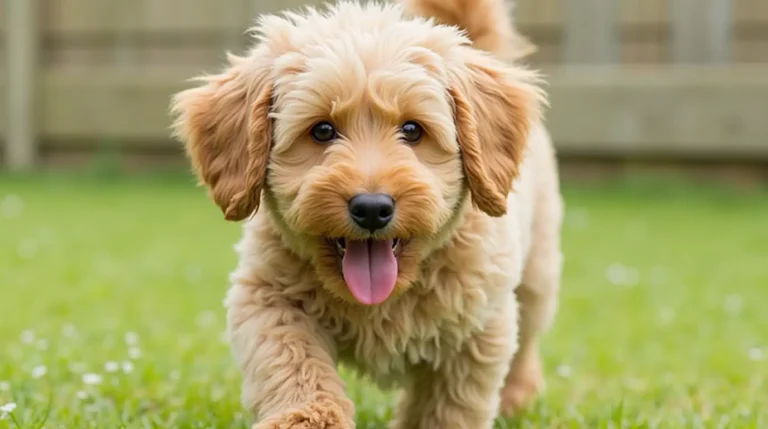Dry Dog Nose: Causes, Symptoms, and How to Treat It
As a dog owner, it’s not uncommon to notice that your dog’s nose has become dry or cracked. This condition, often referred to as a “dry dog nose,” is something that causes many pet parents to wonder whether it’s a serious issue or just a harmless quirk.
But when your dog rubs its nose on the floor or walls, is it a sign of a health problem? What does it really mean for your dog’s well-being? Let’s explore this condition more thoroughly.
What is a “Dry Dog Nose”?

A dry dog nose is when your dog’s nose appears to be dry, cracked, or rough to the touch. It might turn red, pink, or even darker in color. While a moist and cool nose is usually considered normal in dogs, there are several reasons why it might dry out or change in appearance. Sometimes, this condition is simply temporary and doesn’t require much attention. Other times, it can indicate an underlying issue that needs to be addressed.
The condition is often colloquially referred to as “kennel nose,” especially in situations where dogs are in boarding kennels or dog hotels. Whether your dog is at a five-star resort or at home, it’s important to understand the reasons behind this dry nose and what you can do to help.
Why Does My Dog Have a Dry Nose?
There are several potential causes for your dog’s dry nose. Understanding what’s behind this condition is key to knowing how to address it. Let’s break down some of the most common reasons for a dry dog nose.
1. Separation Anxiety: A Silent Culprit
One of the most common causes of a dry dog nose is separation anxiety. When dogs experience stress or anxiety, especially when they are left alone, they may start rubbing their noses on surfaces like the floor, walls, or furniture. This repetitive behavior can cause their nose to dry out. Just like humans might fidget when nervous, dogs often exhibit physical symptoms like nose rubbing to relieve anxiety.
Tip: If you suspect your dog’s dry nose is due to separation anxiety, gradually increasing the time you spend away from them can help them adjust to being alone. Also, try giving them comforting toys or treats that can distract them and provide a sense of security.
2. Change in Diet: A Sudden Shift
Dogs are creatures of habit. A sudden change in their diet can throw off their digestive system, potentially causing allergic reactions or skin issues that may manifest as a dry nose. Whether you’ve changed their food brand or introduced a new flavor, dietary changes can trigger reactions in some dogs.
Tip: If you need to change your dog’s food, do so gradually by mixing the old food with the new one over several days to avoid upsetting their system.
3. Unclean Environment: Dirt and Grime
Sometimes, dogs rub their noses on surfaces because they are trying to clean their faces from dirt, food, or substances stuck to their fur. This is particularly common with breeds that have short noses or wrinkles, like Bulldogs and Pugs. However, any dog that gets dirt or debris on its face might rub it against a nearby surface, leading to nose irritation and dryness.
Tip: Regular grooming and cleaning your dog’s face can help reduce the likelihood of this happening. Use a gentle dog-safe facial wipe to clean your dog’s nose area and prevent buildup.
4. Behavioral Instincts: Natural Tendencies
Some dogs have inherited behaviors or instincts that can contribute to a dry nose. For example, dogs that feel threatened may attempt to protect their food by hiding it. In some cases, when they’re at a boarding kennel or unfamiliar environment, they may rub their noses or face while trying to secure their food or belongings.
Tip: If you’re boarding your dog, ensure they have a familiar environment to make them feel safe. Bring along their favorite toys, bedding, and food to keep them comfortable and reduce anxiety-driven behaviors.
5. Pain or Discomfort: Something More Serious?
If your dog has an injury or discomfort inside their nose or mouth—such as a foreign object, tooth infection, or even an insect sting—they might start rubbing their nose as a way to relieve the pain. This rubbing can lead to further irritation and dryness.
Tip: If your dog shows signs of pain, such as whining, pawing at the nose, or decreased appetite, it’s important to consult your veterinarian for a proper diagnosis.
6. Itching and Allergies: The Constant Scratch
The other reason dogs get kennel nose is because of itching. Dogs constantly rub their noses cause of kennel nose. All itching isn’t answerable for the worry, yet now and then the steady nose scouring may prompt a kennel nose in the dog in light of parasitic diseases, or hypersensitivity, insects, or mites.
Tip: Regularly check your dog for fleas or signs of allergies. If you suspect a food allergy or environmental irritant, talk to your vet about possible allergy testing and treatments.
How to Prevent a Dry Dog Nose

While it’s important to know how to treat a dry dog nose, preventing it in the first place is always the best option. Here are some tips to keep your dog’s nose healthy and moist:
1. Reduce Anxiety and Stress
If your dog suffers from separation anxiety, try to reduce their stress by gradually getting them used to being alone. Provide them with interactive toys, calming music, or even a pet-sitter to keep them company while you’re gone.
Tip: You can also try aromatherapy or calming sprays specifically designed for pets to create a soothing environment.
2. Keep Their Environment Clean
Regular grooming is essential to avoid dirt buildup on your dog’s nose. Make sure to wipe down their face with a soft cloth, especially if they’re prone to rubbing their nose against surfaces. Clean bedding, toys, and spaces also help maintain hygiene.
3. Gradual Dietary Changes
Avoid making drastic changes to your dog’s diet. If you need to switch their food, do so slowly over a period of a week to ensure their digestive system adjusts properly.
How to Treat a Dry Dog Nose at Home
If your dog’s nose becomes dry, there are several simple home remedies you can try to help soothe their discomfort.
1. Clean the Nose Gently
Use a warm, damp cloth to gently clean your dog’s nose 2-3 times a day. This will help remove any dirt or debris that could be irritating the skin.
2. Apply Non-Steroid Creams
After cleaning, you can apply a gentle, non-steroidal ointment to moisturize your dog’s nose. Make sure the ointment is specifically formulated for pets and does not contain harmful ingredients.
3. Monitor Your Dog’s Condition
If your dog’s condition doesn’t improve after a few days of at-home treatment, or if they develop additional symptoms like fever, loss of appetite, or diarrhea, it’s time to consult your veterinarian for further treatment.
Conclusion: Keep Your Dog’s Nose Healthy
A dry dog nose can be caused by many factors, including anxiety, environmental changes, allergies, or injury. While most of the time, it’s nothing to worry about, it’s important to be aware of the signs and understand what might be causing the dryness. By following the prevention tips and treatment suggestions in this article, you can help your dog maintain a healthy, comfortable nose.
Frequently Asked Questions:
- Can I use human ointment on my dog’s dry nose?
- No, it’s best to use ointments made specifically for pets to avoid harmful ingredients.
- When should I see a vet about my dog’s dry nose?
- If your dog’s nose is excessively dry, cracked, or bleeding, or if other symptoms develop, contact your vet.
- How can I tell if my dog’s dry nose is a sign of illness?
- If the dryness is accompanied by other symptoms like lethargy, loss of appetite, or fever, it could be a sign of illness.
- Are certain breeds more prone to dry noses?
- Yes, breeds with short snouts or wrinkled faces, such as Bulldogs and Pugs, are more prone to developing dry noses.
- Can I prevent my dog’s nose from drying out in the future?
- Regular grooming, keeping your dog hydrated, and reducing stress are key to preventing dry noses.







